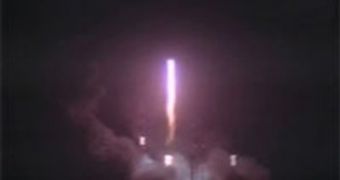A new European communications satellite was successfully launched into orbit on Friday, at 12:24 pm EDT (1624 GMT) from the Russian-operated Baikonur Cosmodrome in Kazakhstan, Space reports. The mission lasted more than nine hours, and the device was positioned on a high-altitude geosynchronous transfer orbit. A 191-foot-tall Proton deliver system was used as the carrier, and the rocket did not disappoint, offering the view of a perfect launch to all those present.
The cargo, the Eutelsat-operated W2A satellite, began its 15-year mission at 01:34 GMT Saturday (9:34 pm EDT Friday), with a successful conclusion of its launch phase. According to the International Launch Services (ILS) – a joint Russian-American venture to market and provide launch services on Proton and Atlas launch vehicles – the craft will deposit itself on a 20.7-degree inclination, with a high point of 22,118 miles (roughly 35,600 kilometers) and a low point of 3,113 miles (some 5010 km).
The launch itself was made possible by the joint efforts of six first stage RD-276 engines aboard the Proton delivery system. Immediately after lift-off, the craft oriented itself towards northeast, and moved further up. Once deployed, it will provide a number of communication-related services to Europe, Africa, the Middle East, as well as to parts of South America and India. Some 2 minutes after the launch sequence was initiated, the first stage engines were shut down and dropped, revealing the second stage thrusters.
These engines burned for about three and a half minutes. After that time, the third stage thrusters kicked in, shutting down their “predecessors” and jettisoning the second stage of the Proton rocket. After this stage exhausted its fuel supply, it also separated, along with the nose cover that protected the W2A satellite during the atmosphere exit process. All that remained was the Breeze M stage, which fired its engines for the first time 11 and a half minutes into the flight. Having reached a temporary, lower orbit, the craft then fired the boosters four more times, until the targeted orbit and inclination were achieved.

 14 DAY TRIAL //
14 DAY TRIAL //